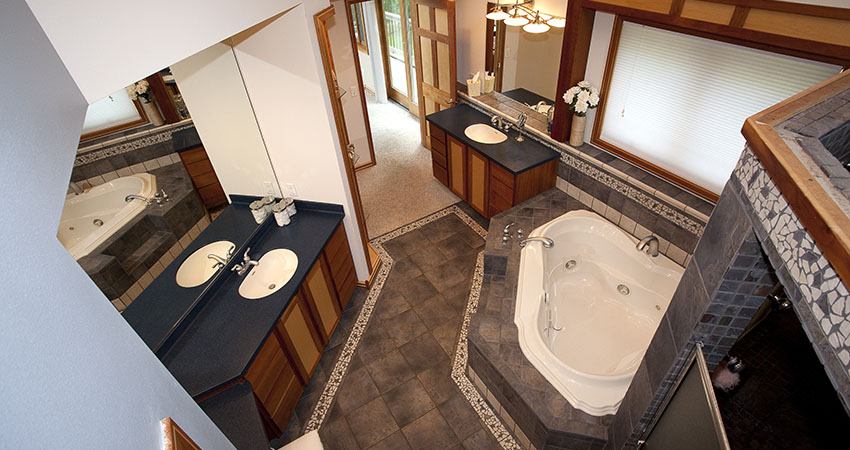The edges of the countertop give the whole slab a unique and distinct look. This is why you need to be careful about selecting the right kind of edge for your granite kitchen countertops. Here is everything you need to know.
Standard Edge
These edges are probably the most simple and common ones people go for. The look is pretty straightforward, having straight and slightly pointed edges. This design is stylish and perfect for contemporary kitchens. It also has a minimal appeal to it.
The only drawback to this design is that the very edges of the countertop can chip off under high impact. This can look very unpleasant and you will need to have it fixed. Therefore, it’s better to protect the edges and not bump into them with too much force. It’s perfect for low-traffic kitchens.
Bullnose Edge
Bull nose edges are more rounded. This design looks very elegant and it also allows any sort of liquid to trickle down and it won’t settle, because of its tapered design. It is perfect for kitchens where children are moving around because the edges are blunt and they won’t poke them. It is a very old design but it is among the few classics which never go out of style, no matter what is trending.
The rounded edge also gives the countertop corners a thinner appearance. And the best thing is that the edges will not chip or break at all, since there is no stray or weak edge that will break on impact.
Bevel Edge
The bevel edge is a combination of a standard and bullnose edge. It is straight from the top, but then it tapers out at a 45-degree angle and the taper rounds off at the end. This design is a beautiful addition to your ordinary countertops and the edges are pretty strong as well.
They have less possibility to break and chip as compared to straight-edged countertops. It looks especially great with minimal, old, and modern kitchens alike. This is one of those styles which is a classic option.
Quarter Round Edge
Quarter round edge can be quite similar to a bevel-edged countertop, but it is also entirely different. The taper is softer and it starts at a quarter of the thickness of the slab. These edges look more beautiful and pronounced when the slab is slightly thicker. Once the taper ends at the quarter thickness, the slab rounds off, giving it an elegant look. This is great for roomy kitchens and these edges are durable too. You can also line them with some other material like wood, to give them a rustic appeal.
Flat Polished Edge
Some people might look at flat polished edges and think of them being the same as standard edges. The main difference between a flat polished edge and a standard edge is that in a flat polished edge, the corners are flat and round, whereas, in a standard edge, the corners are sharp and protrude outwards.
The flat polished edge looks more beautiful and it adds that softness in design which the standard edge is clearly missing. It is also a stronger edge than a standard edge because the rounded edge gives the corners ample security and cushion against sudden impacts and bumps when you’re working in the kitchen.
Step Edge
Lastly, you can also get a step edge on your granite countertops. A step edge is like a staircase but at the edges of the countertop. This edge has slight steps to it and the number of steps depends on the thickness of the slab.
Usually, one to two steps should do the trick for a standard thickness of the slab. This adds a beautiful look to the corners, however, these edges can be hard to clean, since there are grooves that can be hard to reach and dirt and dust can settle in them.
Conclusion
There you have it! These edge designs are perfect for granite, or just about any countertop material. They are functional, durable, and won’t chip for years to come. Find a granite company Durham NC to see different edges for granite countertops. Furthermore, you will have time to choose the right color and pattern for your granite countertop or island.







